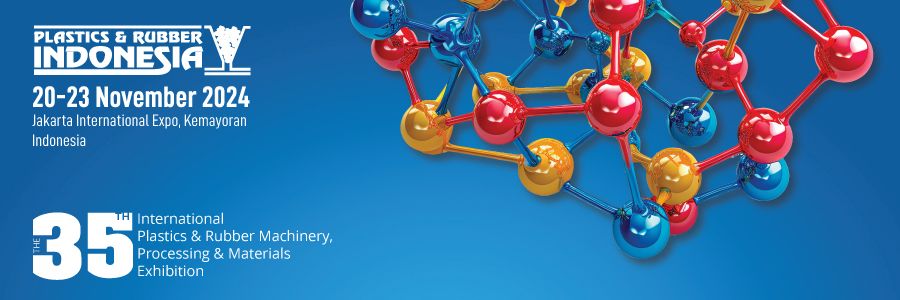Elevate Your Standards: Classy Plastic Injection Mold Medical Parts
Time:
2025-06-30
Elevate Your Standards: Classy Plastic Injection Mold Medical Parts
Table of Contents
- Introduction to Plastic Injection Molding in Healthcare
- The Importance of Quality in Medical Parts
- Key Design Considerations for Medical Injection Molds
- Choosing the Right Materials for Medical Applications
- The Manufacturing Process of Plastic Injection Mold Medical Parts
- Quality Control Standards in Medical Parts Manufacturing
- Applications of Plastic Injection Mold Medical Parts
- Future Trends in Medical Plastic Injection Molding
- Frequently Asked Questions
- Conclusion
Introduction to Plastic Injection Molding in Healthcare
Plastic injection molding has revolutionized the manufacturing landscape, especially in the medical field. The demand for precision-engineered components that meet strict regulatory standards has never been higher. This method allows for the production of complex shapes and designs that are essential for medical devices, ranging from surgical instruments to diagnostic tools. By integrating advanced technology with innovative designs, manufacturers are now able to produce high-quality medical parts that ensure reliability and safety in healthcare applications.
The Importance of Quality in Medical Parts
In healthcare, quality cannot be compromised. Medical parts must meet stringent guidelines set forth by regulatory bodies such as the FDA. High-quality plastic injection mold medical parts can significantly impact patient safety, treatment effectiveness, and overall healthcare outcomes. By investing in top-tier manufacturing processes, healthcare providers can ensure that their equipment functions correctly and safely, thereby enhancing the quality of care provided to patients.
Impact of Quality on Patient Safety
When it comes to medical devices, even the slightest defect can result in severe consequences. Quality control measures during the manufacturing process are critical. Medical plastic parts must be tested for durability, biocompatibility, and performance to eliminate risks associated with product failures.
Regulatory Compliance
Adhering to regulations not only ensures safety but also enhances marketability. Manufacturers that comply with industry standards are more likely to gain trust from healthcare professionals, leading to increased demand for their products.
Key Design Considerations for Medical Injection Molds
Designing injection molds for medical applications involves numerous factors that contribute to the effectiveness and functionality of the final product. Understanding these considerations is essential for achieving optimal results.
Ergonomics and Usability
The design of medical components must prioritize user experience. Consideration should be given to ergonomics, ensuring that the device is user-friendly for healthcare providers and patients alike.
Complex Geometries
Modern medical devices often require complex geometries. Advanced CAD software allows designers to create parts with intricate features that are essential for device functionality.
Minimizing Material Waste
Effective design can lead to reduced material waste, which is not only cost-effective but also environmentally friendly. Efficient designs streamline the molding process and contribute to sustainability in manufacturing.
Choosing the Right Materials for Medical Applications
Material selection is a critical aspect of manufacturing plastic injection mold medical parts. Different materials offer unique properties that are suitable for various applications.
Common Materials Used in Medical Plastic Parts
Common materials include Polypropylene (PP), Polycarbonate (PC), and Polyethylene (PE). Each of these materials possesses unique properties suitable for different medical applications, such as chemical resistance, durability, and clarity.
Biocompatibility
For medical applications, materials must be biocompatible, meaning they do not elicit an adverse reaction when in contact with biological tissues. Testing for biocompatibility is crucial during the material selection process to ensure patient safety.
The Manufacturing Process of Plastic Injection Mold Medical Parts
The manufacturing process for plastic injection mold medical parts involves several stages, each critical to achieving high-quality outcomes.
Injection Molding Process Overview
The injection molding process begins with the melting of plastic pellets, which are then injected into a mold cavity. The material is allowed to cool and solidify, after which the mold is opened, and the part is ejected.
Mold Design and Fabrication
Mold design is a sophisticated process that requires expertise. The mold must be constructed with precision to ensure the final product matches the intended specifications.
Quality Assurance During Manufacturing
Implementing quality assurance practices throughout the manufacturing process is essential. Continuous monitoring and inspection help identify potential issues early, ensuring that only the highest quality products are delivered.
Quality Control Standards in Medical Parts Manufacturing
Quality control is paramount in the production of medical parts. Numerous standards and practices must be adhered to in order to maintain the highest levels of quality.
ISO Certification
ISO certification demonstrates a company’s commitment to quality. Obtaining ISO 13485 certification specifically for medical devices assures clients of rigorous quality management processes.
Testing and Validation
Before products reach the market, they must undergo various tests including mechanical testing, life-cycle testing, and sterilization validation. This comprehensive testing ensures that products perform as expected under real-world conditions.
Applications of Plastic Injection Mold Medical Parts
Plastic injection mold medical parts find applications in various sectors of healthcare, enhancing functionality and reliability.
Surgical Instruments
High-precision surgical instruments manufactured using plastic injection molding offer durability and sterility, essential for modern surgical procedures.
Diagnostic Devices
Diagnostic devices such as blood sampling equipment and test kits rely on precision-engineered components to ensure accurate results.
Implants and Protheses
Medical implants and prostheses made from advanced plastic materials ensure biocompatibility and longevity, improving patient outcomes.
Future Trends in Medical Plastic Injection Molding
As technology evolves, so do the capabilities of plastic injection molding in the medical field. Emerging trends are set to enhance the effectiveness and efficiency of medical part manufacturing.
3D Printing Integration
The integration of 3D printing with traditional molding processes is expected to become more prevalent. This innovation allows for rapid prototyping and customization of medical parts.
Sustainability Initiatives
With an increasing emphasis on sustainability, manufacturers are exploring bio-based and recyclable materials in their production processes, reducing environmental impact.
Smart Medical Devices
The rise of smart technology in healthcare is leading to the development of connected medical devices. Injection-molded parts are essential in housing electronic components that monitor patient health in real-time.
Frequently Asked Questions
What is plastic injection molding?
Plastic injection molding is a manufacturing process that involves injecting molten plastic into a mold to create parts with precise shapes and sizes.
Why is material selection important in medical applications?
Material selection is crucial as it impacts the safety, performance, and biocompatibility of medical devices, directly affecting patient outcomes.
How does quality control affect medical parts manufacturing?
Quality control ensures that all products meet regulatory standards and function correctly, minimizing risks associated with product failures.
What types of tests are performed on medical plastic parts?
Common tests include mechanical testing, biocompatibility testing, and sterilization validation to ensure safety and efficacy.
What are the advantages of using plastic injection molding in healthcare?
Plastic injection molding offers advantages such as precision, repeatability, cost-effectiveness, and the ability to produce complex shapes.
Conclusion
The realm of plastic injection mold medical parts is continuously evolving, driven by advancements in technology and an unwavering commitment to quality. By elevating standards in manufacturing, healthcare providers can ensure that they are equipped with reliable and efficient tools essential for delivering high-quality care. Understanding the intricacies of the design, materials, and quality control processes involved in producing these components is critical for manufacturers aspiring to lead in the medical field. Adopting innovative practices and adhering to stringent quality standards will not only enhance product performance but also foster trust and reliability in the healthcare industry.
RELATED NEWS












